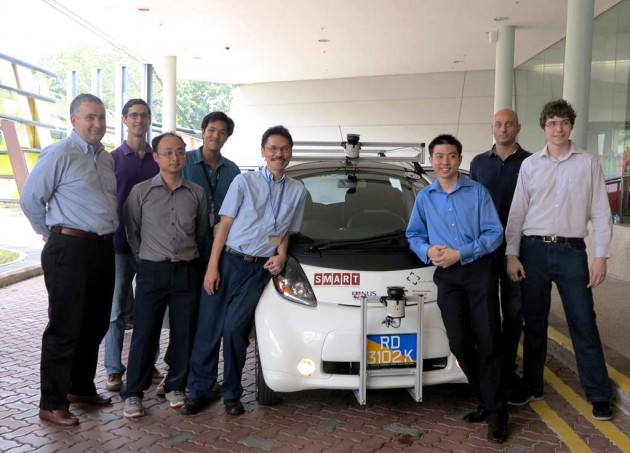
Singapore is looking to open one of its neighbourhoods to driverless car testing starting next year, with the aim of reducing congestion and remodelling itself into a city built around walking, cycling and public transit.
According to the MIT Technology Review, the tiny city state is looking to operate a "first- and last-mile connectivity" service, taking passengers to public transportation services such as trains, or sending them to their destination from the nearest transit end point.
"Singapore welcomes industry and academia to deploy automated vehicles for testing under real traffic conditions on public roads," said director of the futures division of Singapore's ministry of transport Lam Wee Shann.
Singapore has already run public trials earlier this year in the Chinese and Japanese gardens in Jurong Lake District, utilising driverless buggies, an online booking system and vehicle-to-vehicle communications. The service ran on two weekends, transporting 500 people over 400 km in total.
This follows several years of pilot tests through the Singapore-MIT Alliance for Research and Technology (SMART), starting with two golf carts at the National University of Singapore (NUS). This year, the partnership added an autonomous Mitsubishi i-MIEV to its stable, while a Navia driverless bus has also been used as a shuffle at the Cleantech eco-industrial park as well as the Nanyang Technology University (NTU).
According to senior researcher at the MIT/Fraunhofer ambient mobility initiative Paolo Santi, simulations showed that twice as many autonomous cars can drive through an intersection, reducing congestion and greenhouse gas emissions caused by stop-and-go traffic. This would eliminate the need for traditional infrastructures like traffic lights, he said, adding that he hopes to carry out experiments in Singapore to see how pedestrians and bikes would affect these cars at intersections.
Some problems would need to be ironed out before driverless car sharing could become a viable service, however. "Current maps are not good enough for autonomous vehicles," said TomTom's senior global product manager Nhai Cao, noting that autonomous vehicles would require three-dimensional maps accurate to within 20 cm.
Lam, meanwhile, said that a large-scale availability of these vehicles could mean that car trips would increase. "An autonomous vehicle could add on a lot more road trips, and we can ill afford that," he said.

No comments:
Post a Comment